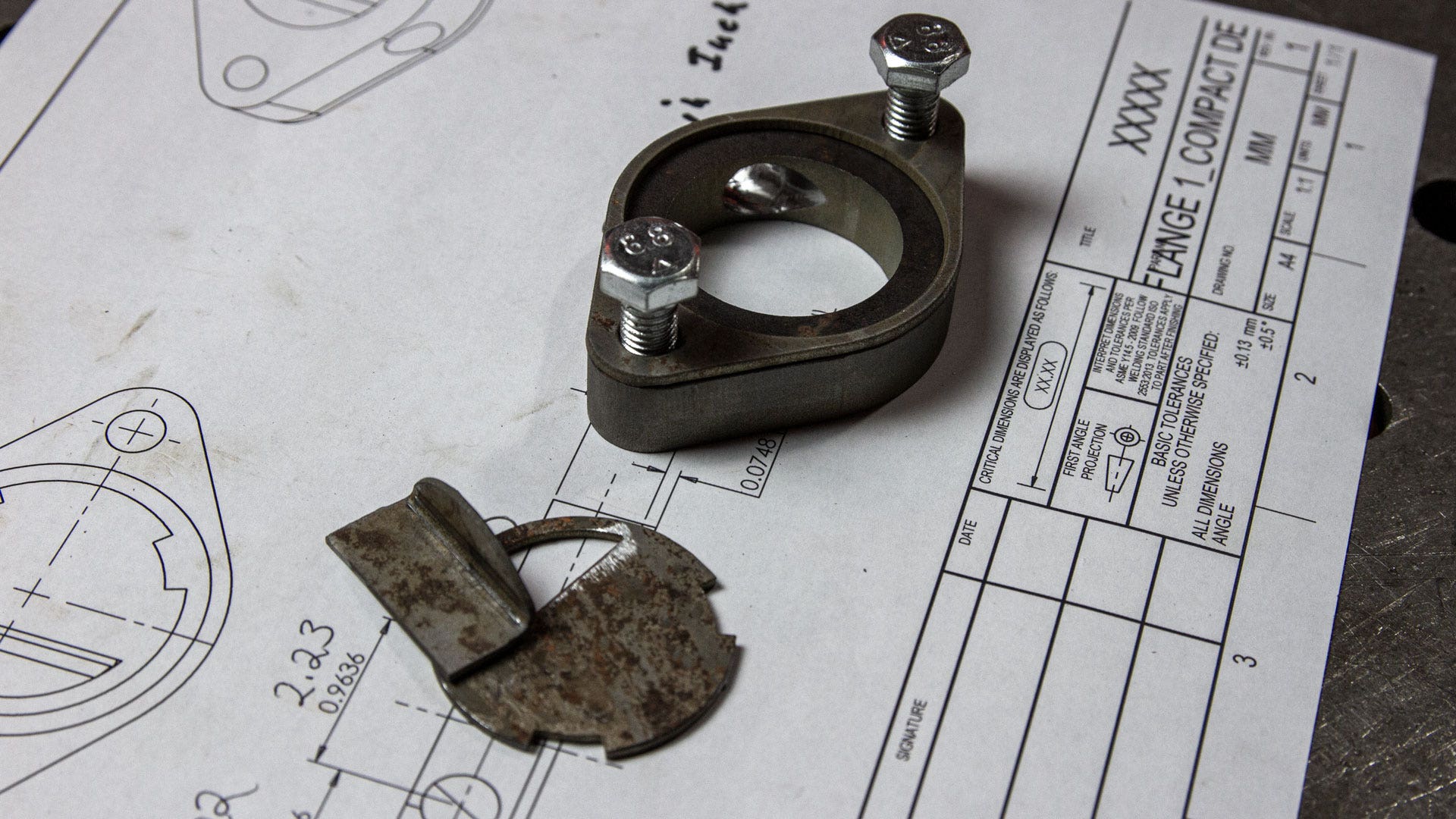
Dirty Work - Oil Catch Can Kit R&D, Part 3: Testing
The last steps of any project are the hardest to get through. The excitement of enjoying the results of your hard work can often get in the way of doing the job right. But hard work without patience often leads to more work.
For us, the last steps of our 2011-2016 and 2017+ catch cans were also the most technically demanding. In our last post, we took measurements of both trucks' filter boxes and engines with our 3D scanner, then designed and 3D printed adapters to fit between the engine and the filter box. These adapters will give us a way to divert blow-by from the valve cover into our catch can, then back through the filter box and into the engine.
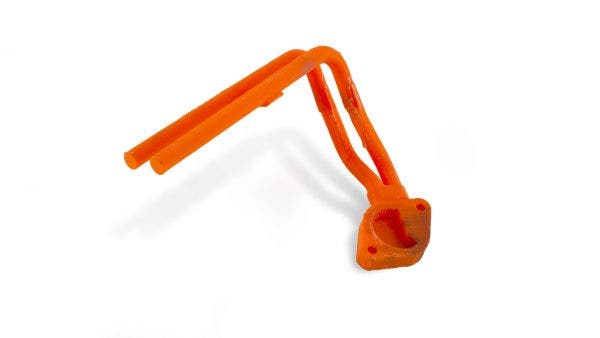
Before moving on, we needed to make sure the adapters fit, and the filter box could still be installed between the engine and the firewall. We also needed to determine where to mount the catch can. This is where our dream of one bracket for both trucks was crushed. We wanted to keep the lines short and simple, but there aren't many suitable mounting locations in the 6.7L engine bay for a large catch can like our high-flow diesel can. Luckily, the firewall has a few sturdy bolt locations above the CCV filter box. This is where we chose to mount our catch can, but due to slight difference in the firewall and filter box of each truck, we were forced to design two different brackets. Despite the differences in brackets, the can positions and filter boxes are similar enough that we can use the same lines for both trucks.
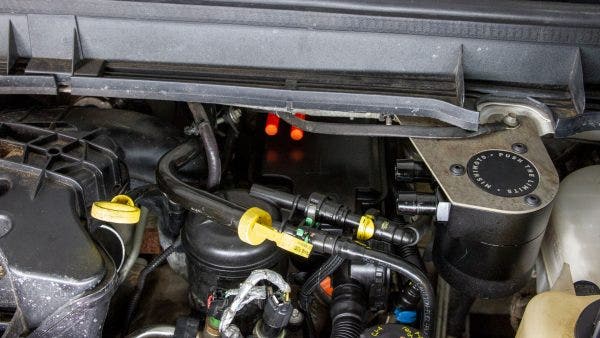
Dan designed two simple but sturdy brackets, and our fabricator cut them on the waterjet. After they were bent to fit the trucks' firewalls, Dan installed them onto each truck along with the adapters. He then bolted on the catch cans and traced the best path for the lines. In no time at all, we had almost everything we needed to start catching blow-by. Our 3D printed adapters fit like they should, but the plastic would neither hold up to the heat of the engine, nor could the solid tubes carry blow-by to the catch cans. To finish our prototype kits and begin collecting blow-by, we needed functional adapters.
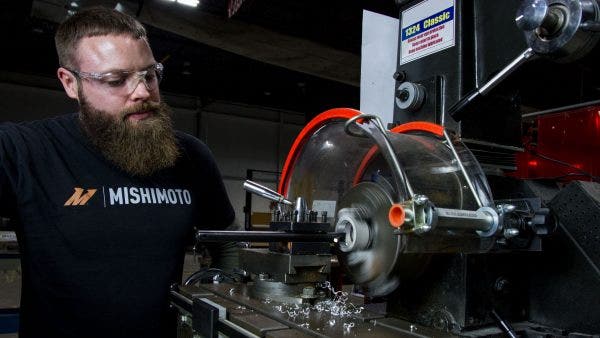
Making these adapters would turn out to be challenging, but our fabricator, Mike, rose to the challenge. The outlet adapter looks simple enough, but achieving a leak-free O-ring fit requires precision. Mike chucked a piece of aluminum round stock that was close to the diameter we needed and fired up the lathe. Taking his time not to overshoot the dimensions, Mike carefully chipped away at the outlet adapter. It took a few tries to get the adapter just right, but Mike persevered and in the end we had a perfectly fitting adapter.
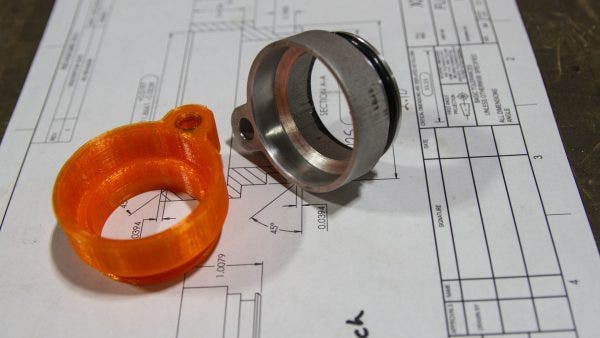
The inlet adapter would be an even greater challenge. Creating such a small and complex adapter would test Mike's years of welding experience. We used the waterjet to cut out the basic parts of the adapter with precision. Mike then donned his welding helmet and gloves to join all the pieces together. Our production adapters will be aluminum, but we made our prototype from steel to make fabrication a little easier. Several minutes of welding later, we had our inlet adapter.
The final step before production was to assemble the prototypes and send both trucks out for 1,000 miles of testing. Dan installed our newly minted adapters and the catch cans with their respective brackets. He connected the lines to the adapters, and then to the cans, and our prototypes were ready to go.
Thanks to our project manager and Director of Innovation, who both commute over 100 miles a day, 1,000 miles racked up in no time. We pulled both trucks back into our engineering facility and emptied the cans. What came out of our 2017+ catch can was about what we were expecting from a newer truck. The catch can contained about 5 ml of dark black oil"more than enough to coat the intake valves or turbo compressor wheel.
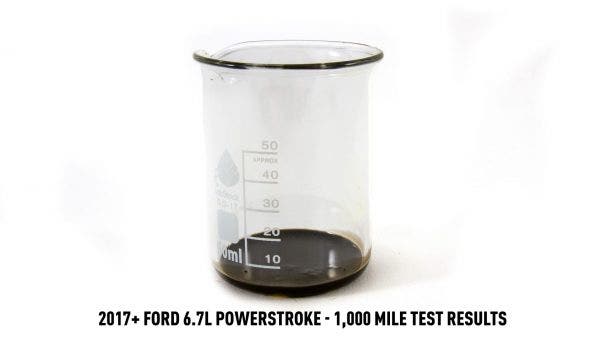
Emptying the 2011-2016 catch can revealed something a little more surprising, however. Instead of the normal black oily blow-by we saw from the 2017+ kit, we found a gray and black sludge that looked like oil mixed with burnt marshmallows. We emptied the blow-by into a glass beaker to settle so we could more accurately assess its contents. After several weeks of coating the sides of the glass, the blow-by finally settled enough to get an accurate reading. Our catch can had caught what looked like 25 ml of gray sludge and 5 ml of oil.
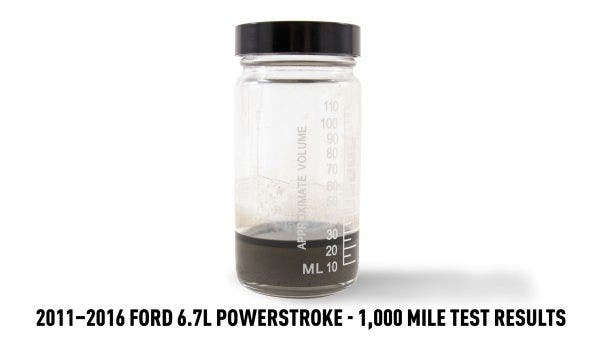
Tilting the beaker revealed that the gray material was still clinging to the sides of the glass, however, so we emptied the contents into another beaker with hopes of separating sludge from oil. The second beaker showed just how much oil was in the blow-by. In the end, our 2011-2016 catch can kit caught 20 ml of oily blow-by and about 10 ml more of gray blow-by that we believe is a mixture of oil, fuel, carbon, and condensation. Whatever it's made of, if it's sticky enough to cling to glass for weeks, imagine what it can do to your valves, turbo, and EGR.
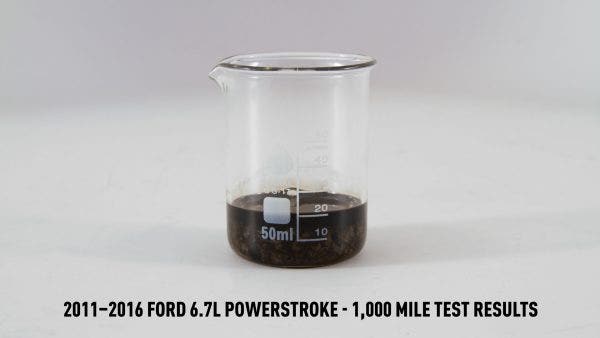
With testing completed successfully, there's nothing left to do but get our 2011-2016 and 2017+ 6.7L Powerstroke catch can kits into the hands of our customers. We've already kicked off production and we'll be running a discounted pre-sale on both kits for a limited time. Now is your chance to protect your truck from blow-by and keep the dirty work where it's supposed to be, out of your truck's intake. So, head over to our website to check out the 2011-2016 6.7L kit or the 2017+ kit and, as always, let us know if you have any questions.








